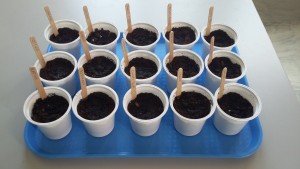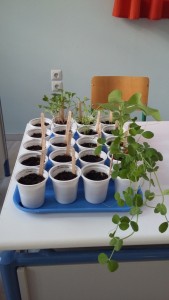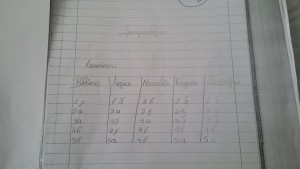“Αίσωπε και Potter, παραμυθοβγαίνουμε;” – Η Ιστορία της Τζεμάιμα Παντλ-Ντακ III με πασχαλινές δραστηριότητες!
Είναι κάτι στιγμές, που κορυφώνονται όλα όσα ετοίμαζες καιρό. Σα χείμαρρος έρχονται και παρασέρνουν μαζί τους κάθε αρνητική σκέψη, κάθε επιφύλαξη, κάθε φόβο, κάθε αμφιβολία. Λίγο πριν το Πάσχα, και σχεδόν ταυτόχρονα με την εβδομάδα εθελοντισμού Let’s Do It Greece 2017, στην οποία συμμετείχε το σχολείο μας, έγιναν πολλά όμορφα πράγματα με το Γ1.
Σταδιακά, φυτέψαμε σπόρους παραδοσιακούς από την κυρία Όλγα Βενιζέλου – Ρουβά σε πλαστικά που φέραμε από το σπίτι. Οι σπόροι φύτρωσαν και τα βλαστάρια που μεγάλωσαν πολύ, τοποθετήθηκαν ήδη στην κήπο του σχολείου. Αν θέλετε να διαβάσετε για την προετοιμασία μας, μπορείτε να πατήσετε εδώ. Σιγά σιγά, ο κήπος του κύριου Μακ Γκρέγκορ γίνεται πραγματικότητα! Συγκινητική η στιγμή που, μόλις τελειώσαμε με το φύτεμα και ποτίσαμε τα βλαστάρια, ένα παιδάκι με ρώτησε “Κυρία, θα κάνουμε κι άλλες ιστορίες της Μπέατριξ Πόττερ;”. Διαθεματικότητα ολέ!
Έπειτα, σειρά είχε το μικρό μας σκετσάκι, που το γράψαμε εμπνευσμένοι από τη συνάντηση μιας πάπιας με έναν αλεπούδο στο δάσος. Ήθελαν να το παίξουμε στον κήπο, αλλά λόγω του Let’s Do It Greece είχε κίνηση εκείνη την ημέρα, οπότε συμβιβαστήκαμε με την τάξη. Τα πήγαν πολύ καλά, και αυτοσχεδίασαν κιόλας! Είμαι περήφανη 🙂 Περισσότερες λεπτιμέρειες για την προετοιμασία αυτού του κομματιού, εδώ.
Τέλος, πώς θα μπορούσαμε να μην φτιάξουμε τη Τζεμάιμα και τα τέσσερα τζεμαϊμάκια της, ένα μόμπιλο που στόλισε τον πίνακα της τάξης λίγο πριν το Πάσχα; Ο πίνακας παρεμπιπτόντως έγραφε ένα πρόβλημα μαθηματικών με πάπιες, χήνες και κότες – όχι τυχαίο, φυσικά! Είπαμε, ότι η συνεργασία με την Πετρούλα Κουρτέση, τη δασκάλα του τμήματος Γ1, είναι απίστευτη! Αξίζει να διαβάσετε για την εκκίνηση του προγράμματος, εδώ.
Καλό Πάσχα λοιπόν σε όλους!










